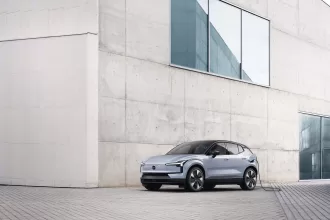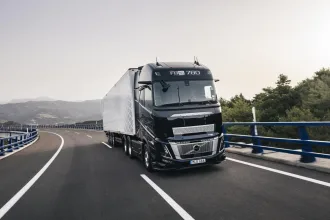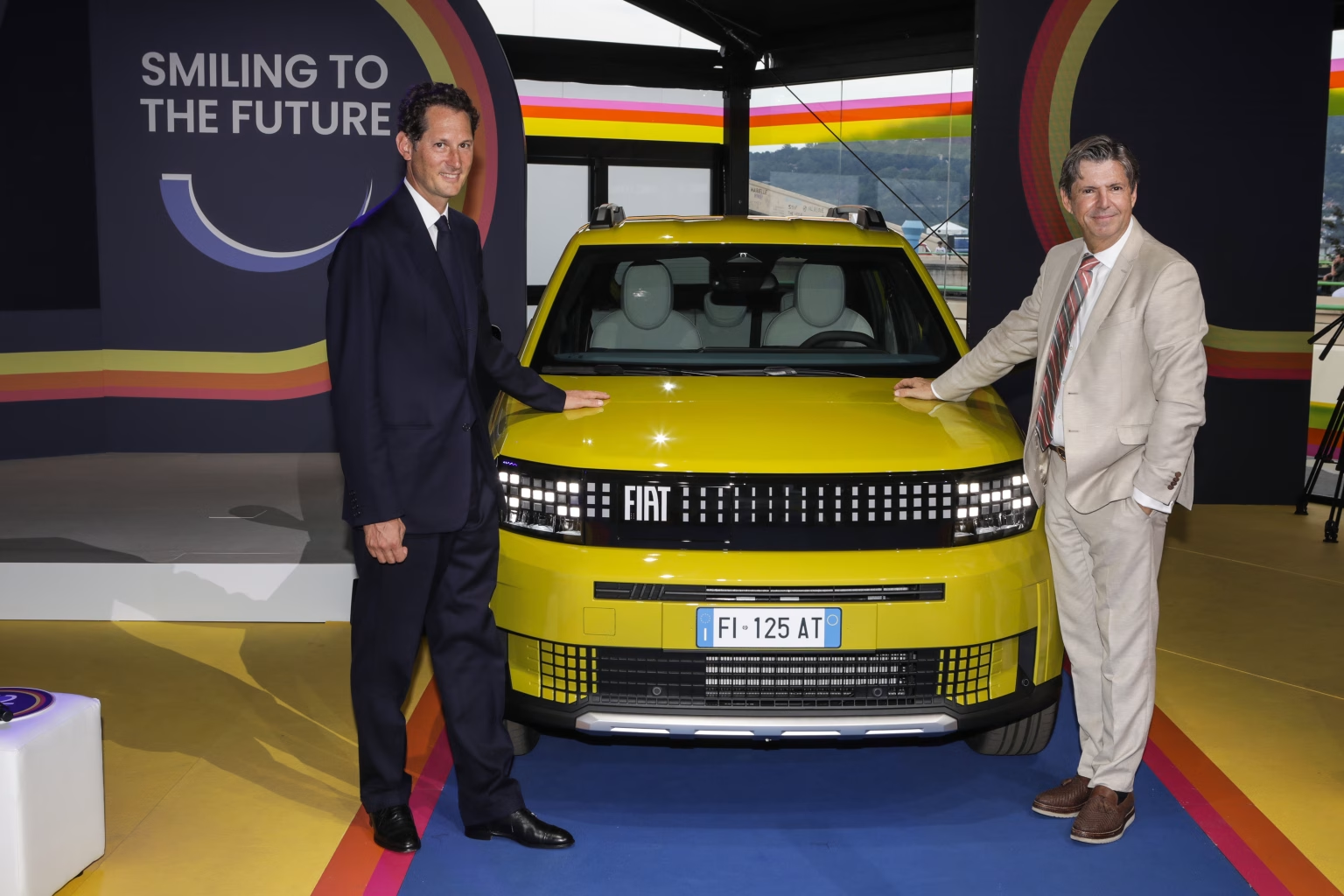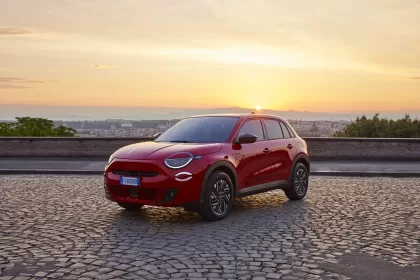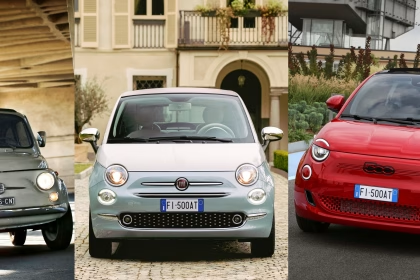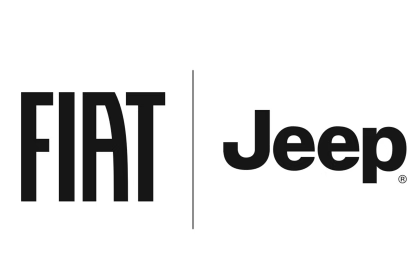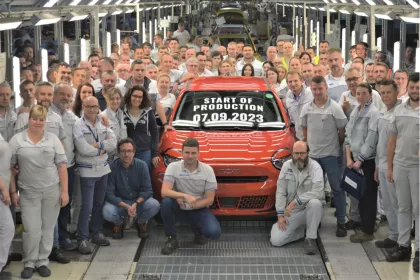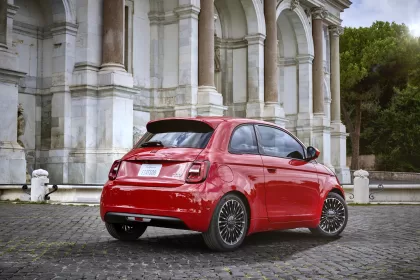- “La Pista 500” at the Lingotto building in Turin hosted FIAT’s 125th anniversary “Smiling to the future” ceremony.
- The celebrations held in Turin ended with a stunning parade of contemporary and classic FIAT vehicles, many of them coming from the Heritage Hub, the extraordinary exhibition location where Stellantis put on the stage its classical cars of the Italian makes: Alfa Romeo, FIAT, Lancia and Abarth.
- Founded on July 11th 1899, FIAT is one of the longest-operating automotive brands in the world and is now set for an even brighter future. Olivier Francois, FIAT CEO, lays out FIAT’s vision for the next decade.
- World premieres for the Fiat 500e Giorgio Armani – the ultimate expression of Italian excellence – and the Fiat Grande Panda, the new global model which marks FIAT’s return to the Global mainstream market.
- Now open at the Pinacoteca Agnelli, the new Casa FIAT exhibition traces the brand’s history and its connection to the Lingotto building.
FIAT’s 125th anniversary “Smiling to the future” event has just come to a close yesterday at the Lingotto building in Turin. The ceremony was both a celebration of a milestone which few automakers reach and the beginning of a new chapter in the brand’s long history of success, social relevance, and leadership which has all been fueled by a customer-first approach. The important event (watch at the following link) was attended by members of the international press, representatives of public institutions – including Minister of Enterprise and Made in Italy, Sen. Adolfo Urso, Vice President of the Senate, Sen. Licia Ronzulli, President of the Commission for Productive Activities, Commerce and Tourism of the Chamber of Deputies, On. Alberto Luigi Gusmeroli, President of the Piedmont Region, Alberto Cirio, Mayor of Turin, Stefano Lo Russo – and the top management of Stellantis:John Elkann, Chairman of Stellantis, Carlos Tavares, Stellantis CEO, and Olivier Francois, FIAT CEO and Stellantis CMO.
On July 11th 1899 in Turin, the articles of association were signed for the “Società Anonima Fabbrica Italiana di Automobili – Torino”. Today, after having produced millions of cars, a common thread connects the brand’s past to its present and future: namely, a specific way of understanding cars which sets the brand apart at a global level to this day and has led to products which simplify everyday life and bring joy to the streets of the world. The celebration’s special guest is the 500e Giorgio Armani, the refined limited edition which will be distributed globally and pair Italian excellence to eco-sustainability. The event also starred the Fiat Grande Panda, the new global model which will kickstart the Italian brand’s new era and the first of a new generation of FIAT vehicles. Furthermore, the event premiered the first real images of two other models in the new global family—an SUV and a fastback—which were introduced last February as concepts and now are at an advanced stage of development and planned to be launched in the following years.
The celebrations held in Turin ended with a stunning parade of classic and contemporary FIAT vehicles which were divided into groups—icons, city cars, compact cars, family cars and light commercial vehicles—which showed themselves off on the Lingotto building’s legendary track to showcase the global Italian brand’s technological and historical heritage.
Let’s go through the main features of our classic FIAT icons that proudly took part to this unusual parade:
508 Balilla 3 Marce (1932)
It represents for Fiat the example of the most popular car produced since its foundation, and achieved widespread market success with its 3 bodywork versions.
500 A Furgone (1936)
The van version expands the range of body types based on the 500 A Topolino, offering an extremely versatile vehicle for goods deliveries in residential areas and to support artisan activities.
500C Topolino (1950)
The first project of the young Dante Giacosa, who ingeniously and unconventionally addressed the theme of reducing overall dimensions for the entry-level car in the FIAT product catalog. The Topolino became an icon known worldwide for its typological and structural innovations, as well as its extremely small dimensions.
8V (1954)
An absolute balance between elegance and power, created entirely at Lingotto and resulting from the technical expertise of Fiat designers.
600 (1955)
With the 600, Fiat introduced the small car with four comfortable seats and mass-produced. It is the first Fiat car with a rear engine and is offered at a lower price than the 500 Topolino. It will also be produced in Serbia, Spain and Argentina.
Nuova 500 (1959)
Dante Giacosa’s great masterpiece among city cars and new mobility, created during the period of the great Italian economic boom. A true icon, it has earned a legendary reputation over 18 years of uninterrupted production.
850 T Autocarro (1965)
The Fiat 850 T, or “Familiare”, in the closed 6-seater version, represents a successful evolution of the 600 Multipla, offering different types for the transport of people, as a van and as a light truck, in a very small space and with notable driving and handling agility.
600D Multipla (1966)
The first 6 seats car with a dual use in the space of a city-car, and the first real minivan between mass production cars.
238 Ambulanza (1969)
The 238, with its bodywork that was not excessively high and well shaped, ensured a good load capacity, thanks to the adoption of front-wheel drive, which eliminated the bulk given by the presence of the transmission shaft and the rear axle, thus allowing a lowering of the load floor level.
124 Sport Spider 1600 (1970)
The convertible version of the popular 124, which is also a success in America, features a simple and personal design by Tom Tjaarda for Pininfarina, becoming an Italian style icon worldwide.
124 Familiare (1972)
The 124 replaces the 1300-1500 sedan and over time, thanks to its affordability and robustness, it becomes a true “world car”.
126 (1980)
The small car that inherits the legacy of the FIAT Nuova 500, featuring rational lines and simple mechanics so optimized that it remained in production for 28 years.
Panda 30 (1980)
The most revolutionary project in order to create a simple and versatile car, where practicality, functionality and economy contributed to an archetype still unsurpassed. This Italdesign styling masterpiece, with its unstoppable two-cylinder 652cc engine, could tell thousands of extraordinay stories and represents the perfect forefather of the current Panda, still ranging first on the italian market.
Cinquecento ED (1992)
One of the milestones in city cars, featuring efficient use of space and extremely rational optimization of the interior. Designed by Centro Stile FIAT and built in Tichy, the new Cinquecento Economy Drive was equipped with a two-cylinder, four-gear 704cc engine, directly derivated by the FIAT 126 Bis, able to reach the maximum speed of 127 Km/h.
Uno 1.1 S i.e. (1992)
The Italdesign styling talent hits again and this ‘minivan-inside’ car redefines the on-board experience with innovative functionality and production concepts that will set new standards for the super-mini segment.
Punto 55 6 Speed (1994)
The B-segment car that innovates in the sector with its inclined windscreen and enveloping windows, interrupted by the high and vertical rear lights.
Multipla 1.6 ELX (1998)
The first 6 seater less-than-4-meter-long car that in 1999 is a protagonist of a great exhibition at MoMA, in New York in order to represent the cars of the new Millennium. A concrete example of Fiat’s creativity and experience in creating new archetypes for the mobility.
These unforgettable cars are the lively evidence that, since its beginnings, FIAT has a strong propension towards internationality, with models produced throughout the globe, while keeping its heart and soul in the Piedmont capital where it was founded. And today with the Grande Panda, thanks to the synergy and opportunities provided by Stellantis, a new season has arrived for FIAT which will be characterized by inclusivity, ingenuity, Italian style, and a global spirit.
Casa FIAT: a unique site to immerse oneself in the FIAT universe
The 125th anniversary is the perfect occasion to inaugurate the new Casa FIAT museum exhibition, a project created by the Pinacoteca Agnelli in collaboration with FIAT. The exhibition traces the brand’s history and its relationship with the Lingotto building, the legendary factory and iconic site of the brand’s industrial production in Turin which was designed by Giacomo Matté Trucco in the 1920s and restored by Renzo Piano in the 1990s.
Thanks to the use of an interactive display, the exhibition branches off into various thematic areas – Car Design, Architecture, Society and Kids – giving visitors the possibility to completely immerse themselves in the FIAT universe. Inside the museum, the story of FIAT gets told, from its early days to its most recent evolutions. Casa FIAT symbolically revolves around the wooden 500 Master model, with a museum itinerary which begins with the company’s founding year of 1899, when the founders gathered to sign the articles of constitution of the Società Anonima Fabbrica Italiana – Torino, giving birth to the FIAT name.
The story proceeds decade by decade, presenting various key moments in its history like the production of the brand’s most iconic cars, including the Fiat Nuova 500, the compact two-seater sedan launched in 1957, and the FIAT Panda, the versatile and innovative car made in 1980 by the designer Giorgetto Giugiaro. Throughout this exhibition, FIAT highlights the importance of its past and its roots, without taking its eye off the future, as demonstrated by the new Grande Panda. FIAT’s story does not come to an end at Casa FIAT.
FIAT is a Partner of Turin 2024 Capital of Business Culture
Since 1899, the history of FIAT has always been linked to Piedmont’s capital and, in the year of the 125thanniversary of its founding, FIAT is a partner of “Turin 2024 Capital of Business Culture”. Awarded by the General Confederation of Italian Industry, thanks to the Turin Industrial Union’s efforts, the prestigious prize not only pays tribute to the city’s manufacturing history, but also recognizes the ability of Turin businesses to look towards the future and confront today’s challenges like the ecological and digital transition, artificial intelligence, and the path for a more sustainable and inclusive society. FIAT is a proud partner of “Turin 2024 Capital of Business Culture” and will actively participate in it with some special initiatives in the event’s program. This includes the exhibition “Turin to the future. Business culture, the culture of innovation” held at the National Museum of the Italian Risorgimento in Turin which is open free to the public until September 29th. The exhibition includes seven multimedia and visual sections installed within the monumental corridor of the Italian Chamber of the National Museum of the Italian Risorgimento, with a focus on the history of Turin’s industrialization. The thrilling tale comes to a close with an immersive section dedicated to the future prospects for entrepreneurship in Turin.


